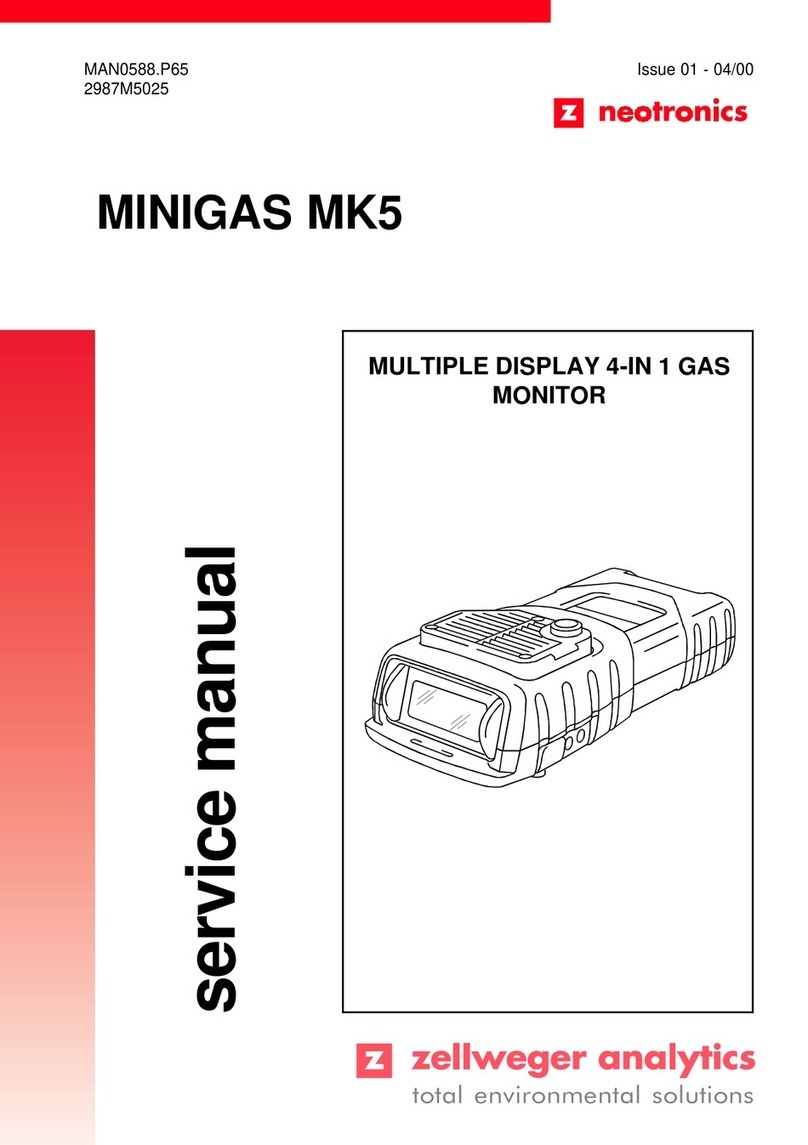
MAN0585.P65 Issue 01 - 11/99
2987M5023
2
INTRINSIC SAFETY APPROVAL
Ensure that you read and understand these Operating Instructions BEFORE
operating any part of the Minigas Mk5.
The Minigas Mk5 has been approved as intrinsically safe by authorities
throughout the world. It is important that, as a matter of safety, the conditions
of those approvals are maintained.
The following warning was issued by BASEEFA and appeared in the
EECS News (No. 14) dated April 1991:
“With regard to repairs, the owner of the equipment is responsible for
ensuring that the repairs are carried out in such a way that the explosion
protection measures incorporated in the equipment remain in compliance
with the appropriate standards. Not only should a competent repairer be
used, but also the specification for the repaired equipment should ideally
be obtained from the manufacturer. Unless the repairs are carried out by a
manufacturer who holds an appropriate EECS licence, we (BASEEFA)
can offer no assurance with regard to the quality of the work done.”
The following warning, applicable to intrinsically safe instruments, was
issued by CoGDEM in October 1992:
CoGDEM
THE COUNCIL OF
GAS DETECTION EQUIPMENT MANUFACTURERS
WARNING
This is a certified product. Service, repair or calibration other than by
the manufacturer or a manufacturer's recommended agent may cause
invalidation of certification, warranty, and result in a safety hazard.
CONFORMITY WITH EUROPEAN
DIRECTIVES
Within the European Union, the CE mark is used in to show conformity with
applicable New Approach Directives specifying the health and safety
requirements.These requirements include EMC and ESD standards.
Within the limits of EMC Directive 89/336/EEC, the design of the Minigas
Mk5 has been tested to EN50 082-2: 1995 to ensure that it has adequate
immunity to RFI and ESD encountered in recommended applications.
Similarly, tests have been carried out to EN55 022: 1995 Class B to ensure
that the Minigas Mk5 does not produce electrical interference.




























